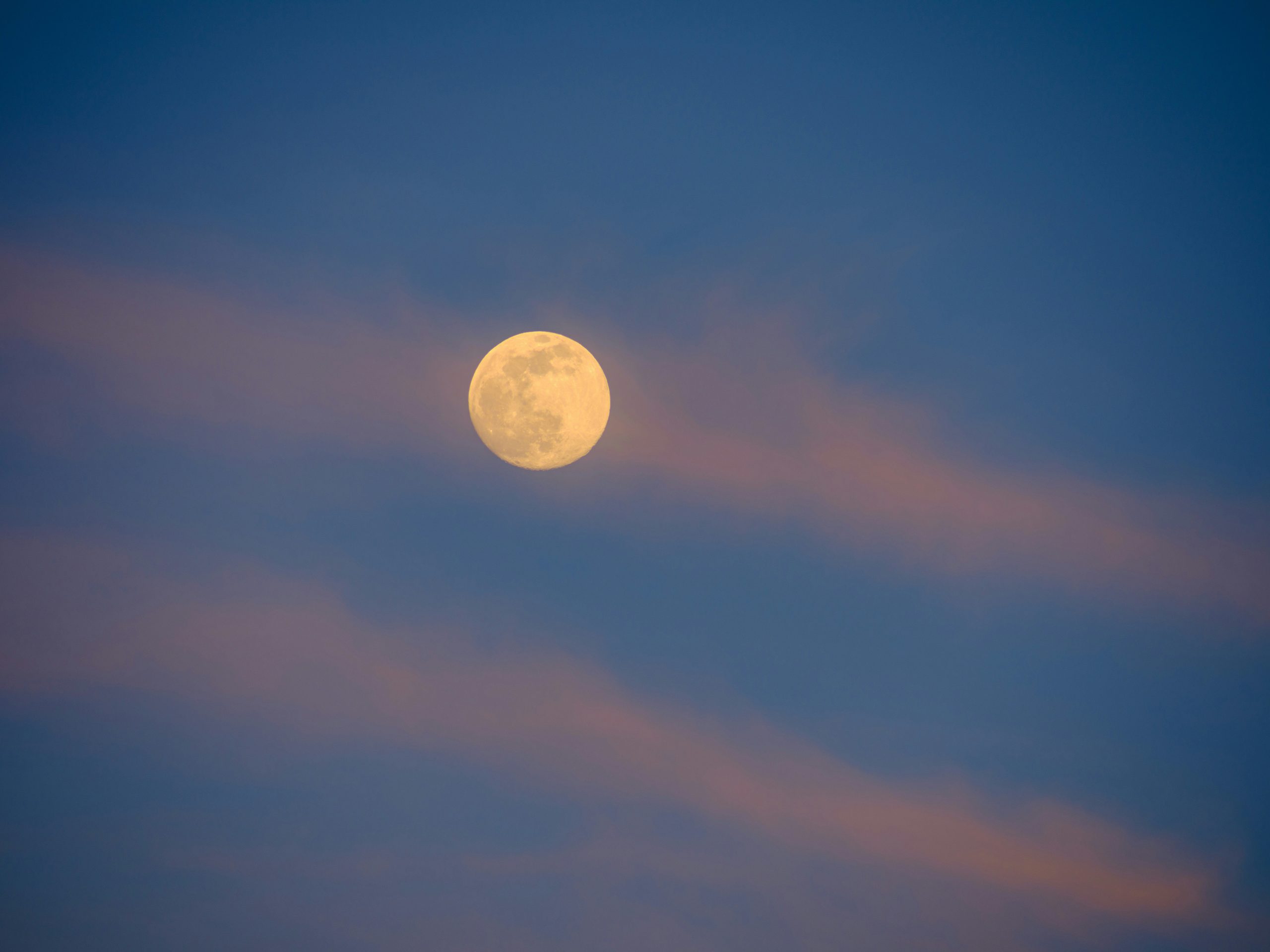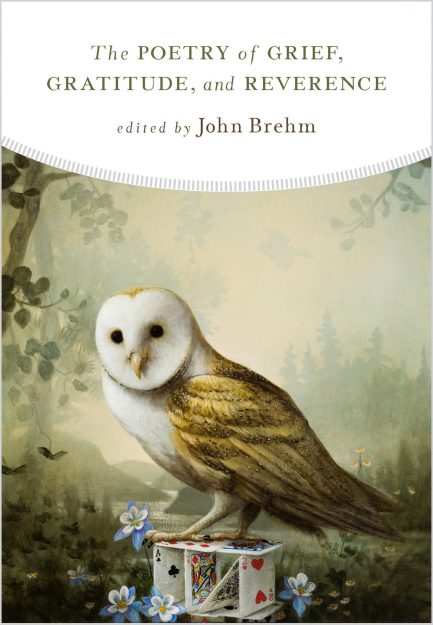The Art of Appreciative Attention
How reading poetry can teach us to stay present with what’s in front of us, on the page and in our lives The post The Art of Appreciative Attention appeared first on Tricycle: The Buddhist Review.

So much of our growth on the spiritual path comes not from gaining new knowledge but from remembering what we’ve always known but have forgotten. Not from learning but unlearning, clearing away the obscurations—the false beliefs and unexamined assumptions—that keep us from accessing our innate wisdom and living from our true nature. The poet Charles Wright puts it succinctly: “For knowledge, add, for wisdom, take away.”
The same is true for poetry. Our first step is to let go of our preconceptions about what a poem is and how we should approach it. For example: the idea that poems are little more than verbal mechanisms—sometimes frustratingly elusive ones—for delivering meaning. Once we let go of that conception of the poem, we can also relinquish what Elizabeth Bishop called “the immodest demand. . . for complete comprehension.” The best poems retain a mystery at their core that we will never fully understand, an experience ultimately beyond the grasp of the grasping mind. The poem that can be explained is not the true poem.
When I was in graduate school, deconstruction was in vogue, and literature professors and PhD students would often speak of “interrogating” a poem, seemingly unaware of or unbothered by the association of interrogation with torture. It was not enough to study or appreciate a poem, you had to interrogate it to prove that you were a tough-minded literary critic, and more importantly to show that you held the poem in your power, regarded it with suspicion, and could make it say what you wanted it to say, by violence if necessary. This way of reading, which still persists in academic settings, is antithetical to the appreciative mode; it is fundamentally aggressive and arises from our desire to control the messy, unpredictable flow of life, to impose fixity on flux.
The practice of appreciative attention can relax the grasping mind and our anxious need to control. And this practice is refreshingly uncomplicated: We simply attend to and savor what we find most pleasing or compelling or resonant in the poem, what feels most alive, most lit up. It may be a line or a stanza; an image, a metaphor, a gesture; a surprising turn or stunning connection; a “lucid, inescapable rhythm,” to use Wallace Stevens’s arresting phrase; an upsurge of emotion, a profound insight, a compelling tone of voice; perhaps a single perfectly chosen, unexpectedly splendid word; or perhaps the whole arc of the poem, the journey it takes us on. Whatever it is that calls to us, the practice is to savor it, to linger, to let your appreciation deepen and expand and take you where it will. Reading poems in this way can help us slow down and stay present with what’s right in front of us, on the page and in our lives.
When our orientation to the poem is appreciative rather than interpretive, when we make primary what we love rather than what we understand (or don’t understand), the poem opens itself more fully to our gaze. And the more we see, the more the poem shows us. Just as a person will relax and come alive when they feel truly seen, poems begin to glow in the light of our appreciative attention. Iain McGilchrist in The Master and His Emissary: The Divided Brain and the Making of the Western World suggests that we experience works of art as being more like people than things. Works of art, especially those that unfold in time like poetry and music, possess a quality of aliveness, an organic self-coherence, that is subtle, fluid, complex, and responsive to our awareness.
The best poems retain a mystery at their core that we will never fully understand, an experience ultimately beyond the grasp of the grasping mind.
We think the world out there, poetry included, is unaffected by and indifferent to the quality of our attention, but it isn’t. When we look with love at the world, when we are in an appreciative mode of consciousness, we change the world we see. With the discovery of the “observer effect,” quantum physics verified what poets and mystics have known for ages: that, as Wordsworth said, we “half create” what we perceive. We know intuitively how this works in the realm of emotion. If we move through the world in a state of anger, anger will find us. When we approach the world with a loving awareness, the world gives us more to love.
It is not so much what we see but how we see. As Baba Hari Dass said, “When a pickpocket meets a saint, all he sees are his pockets.” (We might also say that when a saint meets a pickpocket, all he sees is his divine essence.) The same is true for poetry. When we attune to the spiritual dimension of poetry, we begin to see that poems are by their very nature spiritual.
In some mystical philosophies—Taoism is the prime example—the divine is conceived of not as a being but a process, a perpetual becoming, a ceaseless and mysterious generative flow rather than an unchanging supernatural entity. A contemporary expression of this idea comes from the Franciscan mystic Richard Rohr, for whom God is “a flow, an inner aliveness, a dynamism, moving forward and toward, and never a static Zeus figure sitting on a throne, who must be placated and feared.” Poems can embody this ongoing aliveness, can be a conduit for it, because poems—great poems—issue from flow states themselves, from inspiration, from a kind of divine guidance. So when we enter the poem’s flow—and appreciative attention helps us enter—we experience a current, or undercurrent, of this larger flow that is always all around us but which remains hidden and seemingly inaccessible. A poem is a particular manifestation of it, a particular immanence of this transcendent, generative power.
Even poems that are not spiritual in any obvious way can still convey a quality of sacredness if the poet was in a flow state when the poem came into form. The content of the poem—all that happens in it, all that can be pointed to—doesn’t really matter. What matters is that the poem allows us to make contact with this creative flow and invites us to participate in it. When that happens, we get a taste of the sacred, we attune to it, we feel it. And that is why, or partly why, reading a great poem can be so transformative: It brings us into congruence with the truth of things and reminds us of our own true nature, our buddhanature—open, untainted, alive to the moment, at peace with life’s unfolding.
Though not typically understood as such, flow states in my view are intrinsically spiritual. They bring us to a kind of temporary enlightenment. In flow, we are released from all egoic constrictions, freed from grasping and aversion. The sense of separation falls away as we immerse ourselves wholeheartedly in whatever we’re doing, whatever is arising in the present moment. Time slows down, or disappears altogether; the intuitive mind comes forward as the analytical mind recedes to its proper supportive role; we feel guided by something larger than ourselves that we can’t control but can attune to and allow to move through us. Concentration is intense but also effortless, focused but also wide open. Self-consciousness falls away, and we feel the rightness of every spontaneous decision. There is no disruption between the flow of our awareness and the flow of life itself. It is a blessed state.
As we practice appreciative attention with poetry, we may begin to practice it in our lives as well. We may begin to move through our world noticing more, savoring moments of unexpected delight and looking for beauty and goodness even in the most unlikely places, remembering that it’s not what we see but how we see that matters most. “How hidden is the sacred,” Danusha Laméris writes in “O Darkness,” reminding us that the sacred is always both concealed and revealed, hidden in plain sight, as it were. Perhaps it is doubly hidden from us now, not because it is less present but because we have forgotten how to look for it, have lost the sense of wonder that allows us to see.
This decline in wonder occurs in the development from childhood to adulthood: After flourishing in our first years of life, the sense of wonder gradually fades under the force of habit, repetition, and social conditioning. By the time we reach adulthood, we have absorbed, usually without conscious consideration, a materialist worldview founded on the assumption that whatever can’t be measured doesn’t exist or doesn’t matter. The conditions that make wonder more likely to arise are subsumed in our march toward greater efficiency and uniformity. We live in a disenchanted world.
And here is where poetry can help. We might think of poetry as an agent of re-enchantment. Wonder is at the heart of poetry, and I think that for most people, poets and readers alike, a significant relationship with poetry almost always begins in wonder. My own journey with poetry certainly did. When I started reading and writing poems in my late teens, the insufferable sameness and dullness of Nebraska was suddenly transformed as poetry taught me to actually look at the world rather than just have judgments about it. The endless cornfields I had always ignored, the rutted gravel roads, nameless creeks, nondescript grain silos, all so boring before, now seemed quietly beautiful, worth paying attention to. The landscape wasn’t dramatic like the mountains of Colorado I was always pining for, but subtle. You had to look for what was beautiful, you had to go toward it, but it was there, waiting.
Suddenly everything repaid attention. I remember reading William Carlos Williams and walking through the dirt alleys in my neighborhood, marveling at the all things that had been banished to the bardo zone between usefulness and trash: old tools, broken furniture, rusting bikes, stacks of bricks, paint cans, dented hubcaps, etc. Such things now seemed both visually fascinating and possessed of a mysterious depth. They seemed wondrous. I wasn’t aware of the Japanese aesthetic of wabi-sabi at the time, an aesthetic that values modest things marked by impermanence, imperfection, and melancholy, but I was intuitively aligned with those values. I loved weeds and weathered fence posts, old people, old houses—humble, discarded, neglected things. I had been around these things all my life but had never truly seen them. Poetry helped me see.
Or rather, poetry restored a way of seeing I had lost, a way of being alert for and attuned to wonder, open to its many unexpected manifestations. Connie Donleycott’s haiku gives us a wonderful example:
crowd of umbrellas
a child opens his
face to the rain
Such a quietly stunning image, reminiscent of the great street photography of Henri Cartier-Bresson, Vivian Maier, Garry Winogrand, and others. And such a resonant contrast: The adults open their umbrellas to keep out the rain; the child opens his face to let it in. The poem doesn’t insist on the significance of the scene, or any particular meaning we might find there, but it does lift up this moment from the rush of time and show it to us.
How we choose to see makes all the difference.
After a New Moon
Each evening you gaze in the southwest sky
as a crescent extends in argentine light.
When the moon was new, your mind was
desireless, but now both wax to the world.
While your neighbor’s field is cleared,
your corner plot is strewn with desiccated
sunflower stalks. You scrutinize the bare
apricot limbs that have never set fruit,
the wisteria that has never blossomed,
and wince, hearing how, at New Year’s,
teens bashed in a door and clubbed strangers.
Near a pond, someone kicks a dog out
of a pickup. Each second, a river edged
with ice shifts course. Last summer’s
exposed tractor tire is nearly buried
under silt. An owl lifts from a poplar,
while the moon, no, the human mind
moves from brightest bright to darkest dark.
—Arthur Sze
Over the Moon
Five a.m.—the soft percussion of the rain
on the slanted tin rooftop of my study.
I study it: a single drop dropping again
and again at one second intervals,
like the ticking of a watery clock
above my head. Off to my right,
it comes down in loose clusters,
an absentminded thrumming of fingers
on a tabletop, random, irregular,
or falling in a pattern I can’t perceive.
It’s too dark to see the rain as it falls,
only the reflection of my room
projected onto the empty space beyond
my window—an old Norse word
made from two other words: wind and eye.
My bookcases float blurrily
in the air above the alley,
I tap the keyboard and words appear,
and now the rain appears to be hesitating,
or reconsidering, though it will likely
fall all day long on the bamboo trees
I cannot see, the glorybower, the lilacs
and azaleas readying themselves,
summoning their flowers from the depths
of nonexistence, three kinds of Japanese
maples and the improbable ferns,
huge and flamelike, heart-shaped,
that edge the yard. Last night we stopped
and stepped backward when we crossed
a sidewalk puddle where the moon
had fallen between a reflection
of rootlike branches and swiftly
passing clouds to hover underneath us.
As above, so below, the old alchemists said,
everything mirroring everything else,
falling and rising and falling.
We lingered looking down, then
stepped over the moon and came home.
—John Brehm
♦
© 2024 by John Brehm, The Poetry of Grief, Gratitude, and Reverence. Reprinted by arrangement with Wisdom Publications.

 Kass
Kass 




















.jpg&h=630&w=1200&q=100&v=6e07dc5773&c=1)











